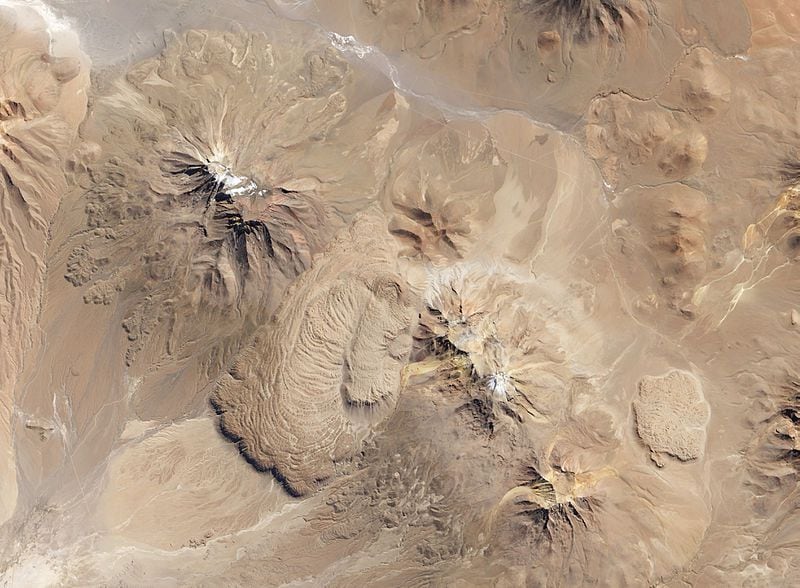Research from the Millennium Institute for Volcanic Risk Research – Ckelar Volcanoes points out that the high concentrations of this chemical element are linked to volcanic activity and the arid climate present in the Altiplano – Puna of Latin American countries.
In South America, the Altiplano-Puna –located at an altitude of more than 3800 m in the northeast of Chile, in the northwest of Argentina, in the southwest of Peru and in the southeast of Bolivia–, It is the highest morphological zone in South America. and the second in the world after Tibet.
At the same time, the crust of the Altiplano-Puna thickens, reaching more than 70 kilometers in some sectors, added to the presence of volcanoes, geological structures and thermal springs, which would give origin to a high concentration of arsenic.
It could affect nearly three million people in Latin American countries like Argentina, Bolivia, Chile and Peru. Moreover, according to the World Health Organization (WHO), 140 million people in 50 countries around the world are exposed to drinking water containing high levels of this chemical element, exceeding the recommended limit (10 µg/L).
The precise study of these high concentrations of arsenic is part of the work of the principal investigator of the Millennium Institute for Volcanic Hazard Research – Ckelar Volcanoes and Director of the UCN Geology PhD in Sciences, Joseline Tapia, with a group of multidisciplinary experts from Bolivia and Argentina.

Origin of arsenic: would affect three million people in Chile and South America
The research is carried out within the framework of the IGCP 707 project, funded by UNESCO, which aims to understand the origin of arsenic, its geochemistry, its mobility and its distribution in the environment, but also, effects on local communities and biodiversity located in the Altiplano-Puna.
In this extreme zone, scientists explain in the article “Towards a comprehensive understanding of “the origin, distribution and biogeochemistry of arsenic in the Altiplano-Puna plateau of South America with the IGCP-707 project” (published in the international journal of geosciences Episodes), the waters of the Altiplano-Puna are endorheic, which means that they are not connected to the ocean, but rather that they converge on large lakes and salines.
Due to the region’s volcanic activity, which is naturally rich in arsenic, all waters contain high concentrations of this element, reaching more than 10,000 μg/l. One of the theories being investigated is whether the arsenic content in northern volcanoes is associated with a hyperarid climate. The presence of water is likely to dilute the concentrations of arsenic, however the arid zones would tend to hyperconcentrate this element.
Untreated water: would affect three million people in Chile and South America
“In this mountainous region, there is a great scarcity of water resources and most of the communities that live in the region consume untreated water. These waters greatly exceed the concentration of arsenic recommended by WHO said Tapia. All of this is stimulated in Chile by the mining activity in the region.
On the other hand, continues the researcher, thanks to urine and blood samples, it has been identified that communities originating from the Argentinean puna and the Bolivian highlands presented concentrations of arsenic (which could be considered toxic ), but have developed the “ASM3T gene”. This allows them to get rid of arsenic more efficiently than someone who is not used to or has never lived in these conditions.

“It is an adaptation that some Altiplano-Puna communities have, but for someone who is not adapted, this chronic consumption of arsenic in drinking water could be harmful to health. Something very similar to what happened in Antofagasta from the 1950s. From 1958 to 1970, residents of Antofagasta consumed dissolved arsenic, causing high rates of cancer in the population, even 40 years after exposure,” explains the UCN researcher.
The study also identified the population most affected by arsenic exposure: mainly concentrated in the Bolivian highlands, in the communities of the Uru Chipaya Nation (Aypari, Wistruyani, Aransaya and Manansaya). These communities have drinking water with arsenic concentrations above human consumption limits. According to research, people living in Uru Chipaya communities have been exposed to arsenic through the water they drink for centuries.
Source: Latercera
I am David Jack and I have been working in the news industry for over 10 years. As an experienced journalist, I specialize in covering sports news with a focus on golf. My articles have been published by some of the most respected publications in the world including The New York Times and Sports Illustrated.


